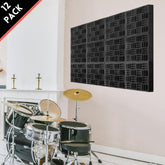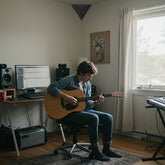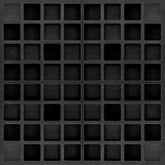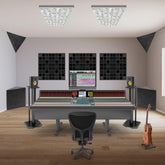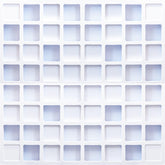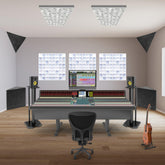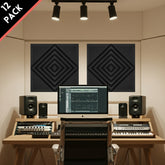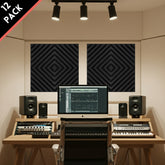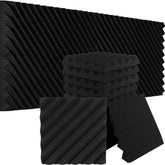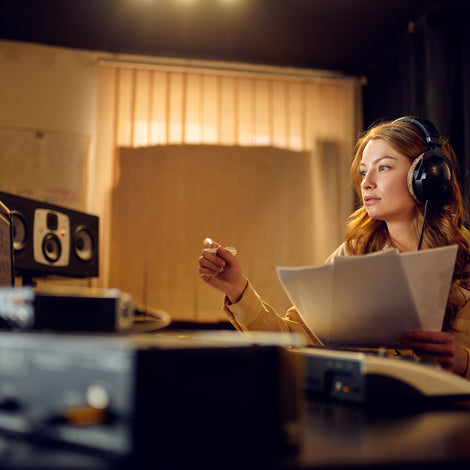Microphone Types and Techniques: A Beginner's Guide
Microphone Types and Techniques: A Beginner's Guide

Types of Microphones
Dynamic Microphones
Dynamic microphones are robust and versatile, making them ideal for live sound applications and capturing loud sound sources. They use a diaphragm attached to a coil of wire, which moves within a magnetic field to generate an electrical signal. Dynamic mics are less sensitive to high frequencies and have a limited frequency response, which can be advantageous in noisy environments.
Key Features:
- Durability: Withstands high sound pressure levels (SPL).
- Affordability: Generally more affordable than other types.
- Versatility: Suitable for live sound, vocals, and instruments.
Common Uses:
- Live sound reinforcement
- Recording drums and guitar amplifiers
- Broadcasting
Condenser Microphones
Condenser microphones are highly sensitive and provide a wide frequency response, making them ideal for studio recordings. They use a diaphragm placed close to a backplate, creating a capacitor. When sound waves hit the diaphragm, the distance between the diaphragm and backplate changes, altering the capacitance and producing an electrical signal.
Key Features:
- Sensitivity: Captures subtle nuances and high frequencies.
- Frequency Response: Wide and flat, suitable for detailed recordings.
- Requires Phantom Power: Needs external power to operate.
Common Uses:
- Studio vocals
- Acoustic instruments
- Ambient sound recording
Ribbon Microphones
Ribbon microphones have a thin metal ribbon suspended within a magnetic field. They are known for their smooth, natural sound and are particularly good at capturing high-frequency details. Ribbon mics are more delicate than dynamic and condenser mics and are best used in controlled studio environments.
Key Features:
- Natural Sound: Smooth and warm audio reproduction.
- Bidirectional Pickup Pattern: Captures sound from the front and back, rejecting sound from the sides.
- Delicate: Requires careful handling and protection from strong air blasts.
Common Uses:
- Vocal recordings
- Brass and woodwind instruments
- Guitar amplifiers
Microphone Polar Patterns
Cardioid
Cardioid microphones have a heart-shaped pickup pattern, capturing sound primarily from the front and rejecting sound from the sides and rear. This pattern is ideal for isolating a sound source in a noisy environment.
Common Uses:
- Live vocals
- Podcasting
- Instrument recording
Omnidirectional
Omnidirectional microphones capture sound equally from all directions. They are useful in situations where capturing the ambient sound or multiple sound sources is essential.
Common Uses:
- Room ambiance
- Group recordings
- Field recording
Bidirectional (Figure-8)
Bidirectional microphones capture sound from the front and back while rejecting sound from the sides. This pattern is ideal for recording two sound sources facing each other or for use in stereo recording techniques.
Common Uses:
- Interview recordings
- Stereo recording
- Blumlein pair technique
Microphone Placement Techniques
Vocals
For recording vocals, place the microphone about 6-12 inches away from the singer's mouth. Use a pop filter to reduce plosive sounds and a shock mount to minimize vibrations. Experiment with angles and distances to find the best sound for the particular voice.
Instruments
Different instruments require different microphone placement techniques:
Acoustic Guitar
Place a condenser mic about 12 inches from where the neck meets the body, angled towards the sound hole.
Drums
Use multiple microphones, such as dynamic mics on the snare and toms, a condenser mic for the overheads, and a dynamic or condenser mic for the bass drum.
Piano
Place two condenser mics inside the piano, one near the bass strings and one near the treble strings, to capture a balanced sound.
Amplifiers
For recording electric guitar amplifiers, place a dynamic microphone close to the speaker cone, slightly off-center, to capture the direct sound. Experiment with distances and angles to achieve the desired tone.

Using Multiple Microphones
Stereo Recording Techniques
Using multiple microphones allows for various stereo recording techniques, enhancing the spatial quality of the recording. Common techniques include:
XY Technique
Place two cardioid microphones at a 90-degree angle, with their diaphragms as close as possible. This technique captures a clear stereo image with good mono compatibility.
AB Technique
Place two omnidirectional microphones a few feet apart, creating a wider stereo image and capturing more room ambiance.
Mid-Side (MS) Technique
Use a cardioid microphone to capture the direct sound (mid) and a bidirectional microphone to capture the side sounds. Combine the signals in post-production to control the stereo width.
Phase Issues
When using multiple microphones, be aware of phase issues, which can occur when sound waves arrive at the microphones at different times. To minimize phase problems, follow the 3:1 rule: place the second microphone three times the distance from the first microphone as the first microphone is from the sound source.
Practical Tips for Microphone Use
Avoiding Plosives and Sibilance
Plosives are explosive sounds caused by the letters "p" and "b," while sibilance is the hissing sound caused by "s" and "sh." To reduce plosives, use a pop filter and position the microphone slightly off-axis. To minimize sibilance, adjust the microphone angle and use de-essing techniques in post-production.
Managing Proximity Effect
The proximity effect occurs when a directional microphone boosts bass frequencies as it gets closer to the sound source. To manage this, position the microphone at an appropriate distance and use EQ to balance the sound if necessary.
Environmental Considerations
Consider the recording environment when placing microphones. Use acoustic panels and bass traps to reduce reflections and unwanted noise. For live recordings, use windshields and foam covers to protect microphones from wind and handling noise.
Advanced Microphone Techniques
Binaural Recording
Binaural recording uses two microphones placed inside a dummy head to replicate the way humans hear sound. This technique creates a 3D audio effect, providing an immersive listening experience when played back through headphones.
Ambisonic Recording
Ambisonic recording captures sound from all directions using a special microphone array. This technique is used for virtual reality (VR) and immersive audio applications, allowing for flexible sound manipulation in post-production.
Creative Effects
Experiment with creative microphone techniques, such as using unconventional microphone placements, blending different microphone types, and processing the signals with effects like reverb, delay, and distortion.
Conclusion
Understanding the different types of microphones and their appropriate techniques is essential for achieving high-quality recordings. Whether you're setting up a home studio or working in a professional environment, knowing how to select and use microphones effectively will greatly enhance your sound engineering skills. Remember, practice and experimentation are key to mastering microphone techniques.
ABOUT AUTHOR
House Live Engineer of Free Bird, a live house with the history of South Korea's indie music scene.
Single album/Regular album/Live recording, Mixing and Mastering experience of various rock and jazz musicians

